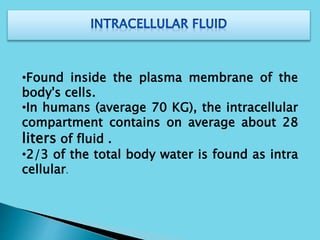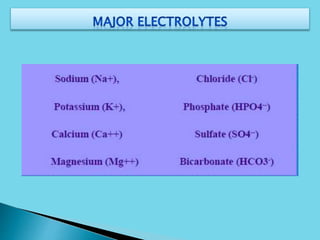This document discusses body fluids and electrolytes. It begins by defining total body fluid as approximately 60% of body weight, divided into intracellular and extracellular fluid. Intracellular fluid makes up 2/3 of total body water inside cells, while extracellular fluid includes interstitial, intravascular and third space fluids, accounting for 1/3 of total body water. The document then examines the composition, regulation and functions of key electrolytes including sodium, potassium, calcium, magnesium, phosphate, chloride and bicarbonate. It provides normal ranges and examples of disorders involving abnormal levels of each electrolyte.





































